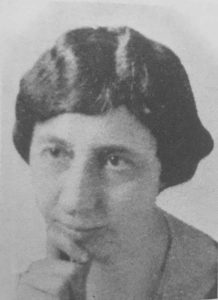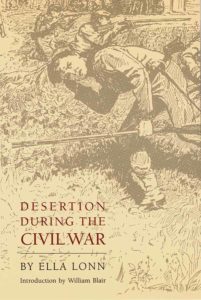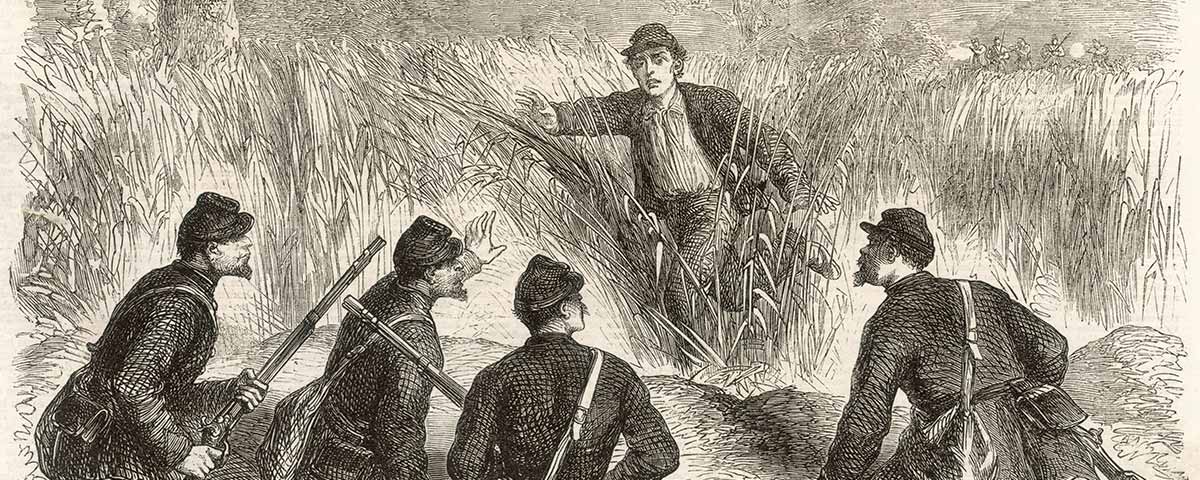Prolific scholar Ella Lonn broke new historical ground in multiple ways
[dropcap]D[/dropcap]uring the first third of the 20th Century, women produced a body of work that anticipated directions Civil War-era scholarship would take many decades later. Annie Heloise Abel’s trilogy The Slaveholding Indians (1915-25) offered a detailed examination of Native Americans between the late-antebellum years and the early phase of Reconstruction. Bessie Martin’s Desertion of Alabama Troops From the Confederate Army (1932) and Georgia Lee Tatum’s Disloyalty in the Confederacy (1934) agreed that disaffection on the military and civilian fronts, often fueled by class conflict, undercut the Southern war effort. Louise B. Hill’s State Socialism in the Confederate States of America (1936) presented the Confederacy as “the most successful demonstration of State Socialism to be found up to the time in modern civilization.” Although they are all in some respects dated, these titles reveal their authors’ rigorous academic training, retain value, and, except for Hill’s, are available in paperback editions.

Ella Lonn’s career overlapped with the other four historians, and her publications, in both quantity and topical reach, made her the most important woman in the field between the 1920s and the 1950s. Educated at the University of Chicago and the University of Pennsylvania, Lonn wrote six books, five of them devoted to the war or Reconstruction. Very few men during the same period, though in many instances better known, matched, never mind exceeded, her accomplishment.
Lonn’s first book, Reconstruction in Louisiana After 1868 (1918), appeared during the era when a series of state studies, many produced by students of John H. Dunning at Columbia University, brought the postwar years to scholarly prominence. As with the volumes of what came to be called the Dunning School, Lonn’s book reflected the racial prejudice of the era and treated Reconstruction as a dark time of great travail for the white South. Lonn argued that social conflict during Reconstruction “was largely a race question, though the bitterness of feeling toward…[the South’s] conquerors and contempt of carpet-bagger and scalawag enter to complicate the matter.” Despite its flaws, the book reflected considerable research and remained the standard title on the subject for a half century.
Desertion During the Civil War (1928; reprinted 1998), Lonn’s second book, addressed a controversial element of the conflict and remains, after almost 90 years, the only general treatment of the subject. “To the casual reader the knowledge of any desertion in the brave ranks of the armies engaged in the Civil War,” wrote Lonn at a time when thousands of Civil War veterans were still alive, “…will come as a distinct shock; even by the historical scholar the full extent of the evil…and the enormous numbers implicated on both sides may not be fully grasped.” In a text divided evenly between the United States and the Confederacy, Lonn explored the causes and extent of desertion, the behavior of men after they left their units, and efforts to control the problem. She estimated that 8,600 of 12,000 deserters from Virginia and nearly 9,000 of 24,000 from North Carolina rejoined the army, while also emphasizing that the presence of thousands of deserters greatly demoralized civilians in parts of North Carolina, Georgia, Florida, and Mississippi.
[quote style=”boxed” float=”left”]Ella Lonn explored the causes and extent of desertion[/quote]
Recognizing that many Confederate “offenders had little conception of the gravity of their offense in military law,” she nevertheless concluded that the Richmond government and military authorities “were unduly lenient” in handling their crime. Lonn judged desertion a contributing factor to Confederate defeats after 1862 and “a prime factor in precipitating catastrophe in 1865,” but she pronounced Northern desertion “the more to be deplored” because it lengthened a war that Union resources otherwise might have ended sooner.
Lonn next turned her attention to a mineral critical to the Confederate war effort. Salt as a Factor in the Confederacy (1933; reprinted 1965) documented the centrality of salt to mid-19th-century society and warmaking. Lonn examined Confederate efforts to produce enough salt, U.S. targeting of salt-making facilities, and the direct and ancillary military, as well as economic and social, consequences related to shortages of salt. In the end, insisted Lonn, the “fact that salt could become a major problem to the confederacy reveals strikingly its complete dependence on outside sources for primary needs and emphasizes that fact as the most serious of its disadvantages in the unequal struggle.”
 Nine years passed before Lonn produced Foreigners in the Confederacy (1940; reprinted 2002), a pathbreaking, 500-page work that reviewers praised for its comprehensive research and originality. Lonn sought to counter the Lost Cause idea that hordes of foreigners helped fill Union ranks while Confederates lacked access to such manpower. Comparatively, she demonstrated, foreigners were overrepresented in Confederate armies, and she underscored the presence of significant foreign-born populations in major Southern cities. Although Lonn exhibited prejudices common to the time in generalizing about the Irish, Hispanics, and other groups, the book, which contains a mass of useful information, placed her far ahead of the scholarly curve in reminding readers that the conflict played out within a context that included Europe, Mexico, and other parts of the world.
Nine years passed before Lonn produced Foreigners in the Confederacy (1940; reprinted 2002), a pathbreaking, 500-page work that reviewers praised for its comprehensive research and originality. Lonn sought to counter the Lost Cause idea that hordes of foreigners helped fill Union ranks while Confederates lacked access to such manpower. Comparatively, she demonstrated, foreigners were overrepresented in Confederate armies, and she underscored the presence of significant foreign-born populations in major Southern cities. Although Lonn exhibited prejudices common to the time in generalizing about the Irish, Hispanics, and other groups, the book, which contains a mass of useful information, placed her far ahead of the scholarly curve in reminding readers that the conflict played out within a context that included Europe, Mexico, and other parts of the world.
Foreigners in the Union Army and Navy (1950) provided a companion to Lonn’s earlier study. Its more than 700 pages dealt with units composed wholly or primarily of foreign-born soldiers as well as with a number of prominent officers (the Navy gets relatively little attention). Lonn estimated that one-quarter of all Union soldiers—more than 500,000—were born outside the United States, with Germans and Irish placing first and second in terms of numbers. As in her book on foreigners in the Confederacy, she linked common characteristics, both positive and negative, to ethnicity. Describing her research as “the most laborious of the writer’s entire experience,” she apologized for not mastering Polish, Russian, and Italian sufficiently to engage with sources in those languages. In the end, she stated, “men from all parts of the world” created “a truly American army, composed of native sons and adopted sons…animated by a genuine devotion to the ideals for which the Union stood.”
Ella Lonn wrote and taught at a time when Civil War scholarship was thoroughly dominated by men who studied military operations, great captains, and political events and leaders. An outlier in many respects, she deserves serious attention from modern students of the conflict. ✯





